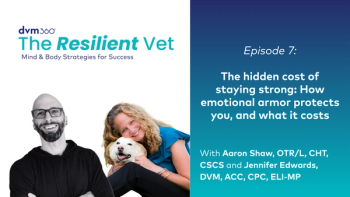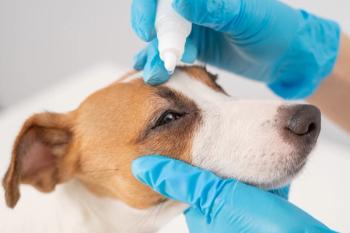|Articles|July 1, 2022
- dvm360 July 2022
- Volume 53
- Issue 7
- Pages: 22
Projections and direction in parasite protection
Vector-borne parasitic diseases are pushing the boundaries of their traditionally endemic regions. A panel of clinicians explains what you need to know.
Advertisement
Content sponsored by Elanco
The Companion Animal Parasite Council (CAPC) predicts heartworm disease, Lyme disease, anaplasmosis, and ehrlichiosis all pose “higher than average risks” throughout the US in 2022. CAPC prevalence maps show heartworm infections continuing to trend northeast into the mid-Atlantic region, while Lyme disease continues its march into the southwest.1 With today’s increasing risks of these vector-borne parasitic diseases and an ever-changing geographic prevalence of the parasites that cause them, an in-depth discussion on parasitic prevention is as critical as ever.
A view from the front line
Reflecting on the CAPC forecasts, the group all felt their anecdotal experiences in practice agreed with the prevalence data. “When I look back, even just 10 years ago, I don’t think we’ve seen such a variety tick-borne diseases and intestinal parasites that we’re seeing now,” said Christman.
Both Katina and Bill Carter said they are seeing an increase in these cases in their clinic based in southern New Jersey. “We’re seeing more heartworm, which I typically didn’t see in the New Jersey area as much,” said Bill Carter. “That’s kind of scary,” he added. Both clinicians mentioned treating an increased number of cases of hookworm, whipworm, giardia, and ehrlichiosis over the past few years.
A hidden factor
Why are vector-borne parasitic diseases spreading beyond their typical geographic regions of prevalence (such as Lyme disease in the northeastern US)? The group touched on several factors that may play a role, such as climate change resulting in warmer, wetter winters and the rapidly growing rate of pet ownership in US households.2
The discussion then turned to one factor in the spread of parasitic diseases that may be flying under pet parents’ radar: the rise of dog parks. Christman prompted the panel for their thoughts on a 2020 study in Parasites & Vectors that sought to assess the prevalence of gastroin- testinal parasites in dogs visiting off-leash dog parks. The study ultimately found intestinal parasites in 20% of dogs and 85% of dog parks across the country, stating routine administration of parasitic preventives can help reduce the health risk canines in the US.3
Advertisement
“Dog parks are basically a daycare where nobody checks your vaccine records,” said Bill Carter. Commenting on the data, he said, “Because of the way they shed eggs...tapeworms and flukes...those are probably underrep- resented in the study.” He added, “That data that was collected came from July and August. That tends to be when the parasite burdens are the lowest because of the hot temperatures. The fact that we’re seeing this high burden in the middle of the summer makes me wonder what’s really going on in winter.”
“...which is exactly the opposite of what clients think,” Katina Carter pointed out.
“They think the snow destroys everything,” said Bill Carter. “It doesn’t work that way.”
Johnson said, “It definitely makes me feel good that I don’t go to dog parks. It’s sad to think that I can’t take the dogs to go play with friends, because I have to worry about them picking up intestinal parasites or really any sort of infectious disease from other dogs.”
An ounce of prevention
Of course, veterinary professionals are not helplessly at the mercy of current trends. So how can clinicians help turn the tide?
Proactive screening
Katina Carter feels that veterinarians should place a greater emphasis on proactively taking stool samples, due to the ever-present issue of noncompliance or imper- fect compliance with preventive medications. “I don’t think that in general practice we make a big enough deal about stool samples...It needs to [done] be a once a year.”
Bill Carter jumped in, adding, “A lot of the [patients] coming in are completely asymptomatic and shedding. We’re finding round[worms] and sometimes hook[worms] and whip[worms]—and these are animals that are not coming in for diarrhea. They’re not sick. They’re just the clients who have a lapse in their prevention.”
Getting them hooked when they’re young
Each of the panel guests stressed the importance of year-round parasite prevention. They each recommend to patients—and give to their own pets—a combination of parasite preventive medications that defend against a broad spectrum of parasites. All 3 spoke about their experiences with Credelio (lotilaner) for flea and tick protection and Interceptor Plus (milbemycin oxime/ praziquantel) for prevention of heartworm disease and controlling roundworm, hookworm, whipworm, and tapeworm infections in dogs.
Johnson partially attributed her choice to the medica- tions being indicated for puppies as young as 6 weeks and 8 weeks old, respectively. “As soon as we can start preven- tion, that is very important,” said Johnson. “I rescued [my dog] at nine weeks [old], so it was perfect that I didn’t have to feel uncomfortable giving [the medications] that young.
Commenting on how this low age requirement helps with compliance, Christman said, “That’s a big sticking point. The point is that they can just transition all the way [to taking the medications] for the rest of their life. Other ones, you have to wait until they’re 6 months of age.”
Katina Carter added, “We also give them free doses the first time they come in as they’re growing so that it’ll just become a habit. By the time we finish seeing them, they’re already 4 or 5 months old and usually, can be on their adult dose and just get the whole year’s [supply of medication].”
Broad-spectrum parasite protection
Christman described this as “360-degree protection,” as the preventive regimen offers protection against 5 worms plus fleas and ticks. Johnson responded, “It’s all-around protection, and it makes me feel confident...it’s hitting all the bases, so everything is covered: heartworm, intestinal parasites, fleas and ticks...everything.”
Katina Carter said, “In the end, [prevention] can make our job easier...being proactive instead of reactive.”
Christman added, “As veterinarians, we don’t have a lot of time to really go over all the recommendations, so that’s one less thing for us to worry about. Having peace of mind knowing that the safety efficacy is in your flea and tick, heartworm, and parasite prevention, we can worry about other things [like] behavior, endocrinopathies, [and so on]. It’s always good to hear, knowing that you as a team feel confident about what you’re recommending that goes out that door.”
References
- 2022 Pet parasite forecasts. Companion Animal Parasite Council (CAPC). Accessed April 4, 2022. https://www.petsandparasites.org/expert-insights/ httpswwwpetsandparasitesorgexpert-insights2021forecasts/
- Pet population still on the rise, with fewer pets per household. JAVMA News. American Veterinary Medical Association. December 1, 2021. Accessed April 4, 2022. https://www.avma.org/javma-news/2021-12-01/ pet-population-still-rise-fewer-pets-household
- Stafford K, Kollasch TM, Duncan KT, et al. Detection of gastrointestinal parasitism at recreational canine sites in the USA: the DOGPARCS study [published correction appears in Parasit Vectors. 2020 Jul 13;13(1):348]. Parasit Vectors. 2020;13(1):275. Published 2020 Jun 1. doi:10.1186/s13071-020-04147-6
Articles in this issue
over 3 years ago
Z is for zebras and other dental surprisesover 3 years ago
Practice ownership perksover 3 years ago
3 steps to protect your practice from ransomwareover 3 years ago
Colic surgery delivers a painful reminderover 3 years ago
Hiring isn't all about moneyover 3 years ago
Dermatology image quizover 3 years ago
Protecting adopted pets from heartworm diseaseover 3 years ago
The A — Z on ADA complianceNewsletter
From exam room tips to practice management insights, get trusted veterinary news delivered straight to your inbox—subscribe to dvm360.
Advertisement
Advertisement
Advertisement
Trending on dvm360
1
Mental health and the use of AI in veterinary medicine
2
Nonpharmacologic ways of managing pain and separation anxiety in dogs
3
Education partnership provides more global learning opportunities
4
Texas Tech to launch its first food animal residency program amid rural vet shortage
5





